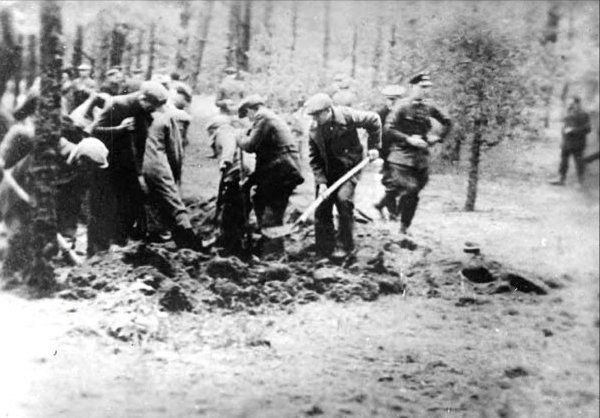A mass grave has been discovered in south east Poland. The grave is thought to date from World War Two and contains the remains of more than 2,500 soldiers.
The soldiers are thought to be from the Soviet Red Army and Italian Army. The grave is located near the city of Przemyl where a Nazi prisoner of war camp had been located during the war, the camps were also known as stalags.
Even though the Italians were part of the Nazi’s Axis countries during World War Two, Mussolini Italy’s pro-Nazi leader was deposed in 1943. Therefore the Nazis turned on Italian soldiers, believing that they were traitors to the Nazi cause.
Those were stopped fighting or tried to escape fighting on behalf of the Nazis were all sent to prisoner of war camps. Many suffered torture and terrible conditions, particularly those who were viewed as traitors.
Since it has been 70 years since the end of World War Two, the remains of the soldiers have fossilized and it is difficult for the excavators to separate or identify individual bodies.
The excavation teams have therefore been gradually extracting bones by distinguishing legs from ribs and other recognisable features.
The soldiers’ skulls which were the most easily identifiable were the first remains to be extracted from the mass grave. This enabled the teams to count how many victims had been laid to rest there.
Excavators believe that most of the soldiers had died of hunger, illness and disease because of the terrible living conditions in the camp, the International Business Times reports.
Personal effects have been found among the remains, but not many. The items have been simple everyday items such as spoons, toothbrushes and small crucifixes.
The reason that there are few personal effects is that the Nazis tended to strip the dead of all their clothing and personal belongings before they were buried. In the concentration camps the Jews were stripped of all their belongings as well, with much of their gold and silver re-melted to be sold on.
All of the remains have now been excavated from the site and have been resituated to a military cemetery near Nehrybka. The cemetery is not yet open to the public, but once all of the burials have formally taken place it is expected to open next year.
